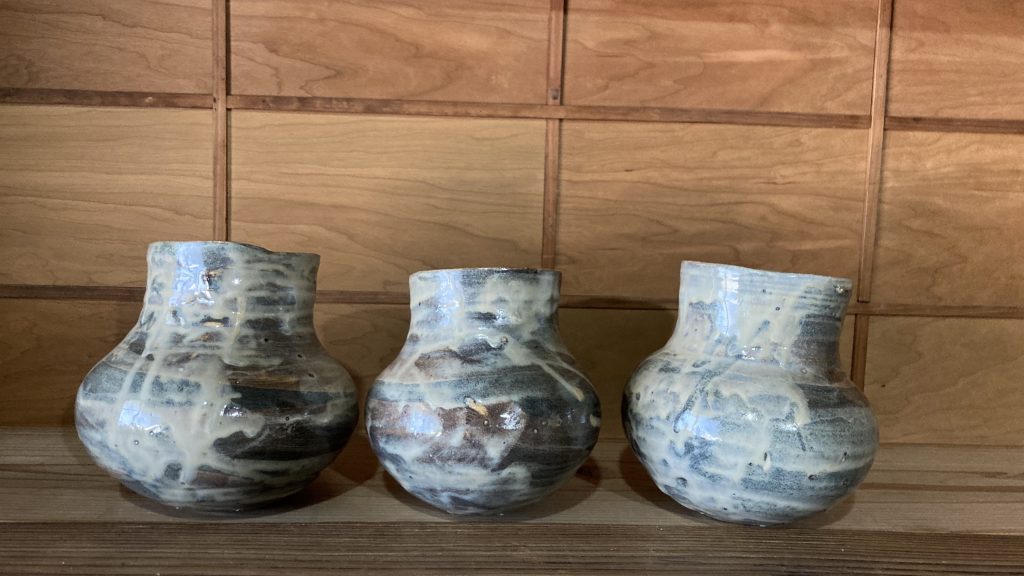“Believing tradition with a vision of future.”
– Charlie Pi, 2009
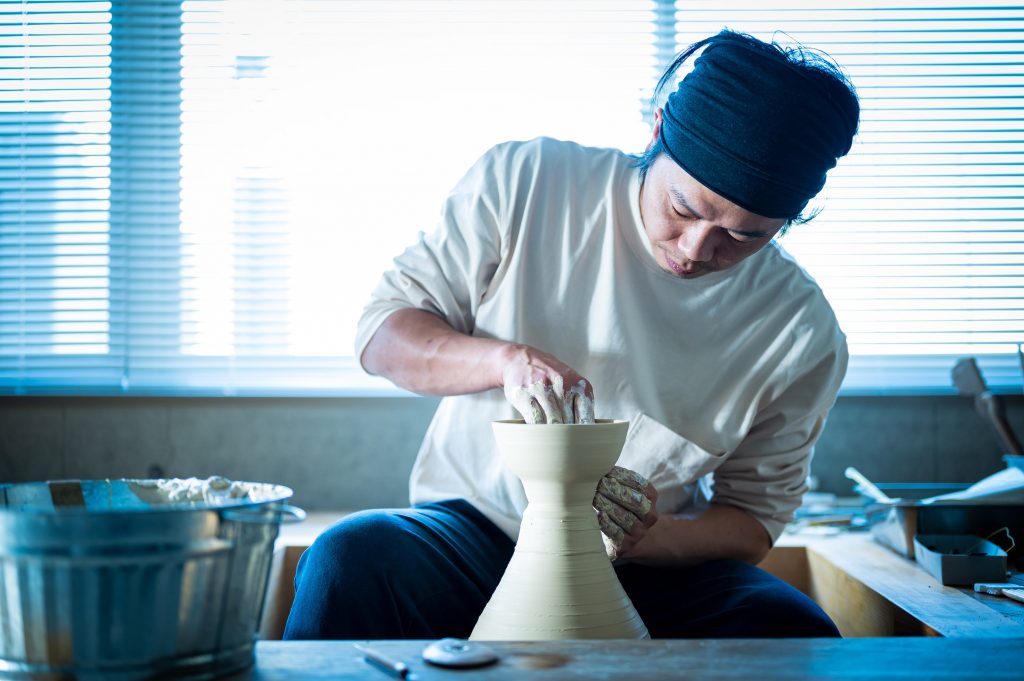
Masami Kato throwing at his studio
tabi Arts’ s collaboration with Tobe artists started in 2009 with the exhibition presenting the works by Dentou Kougei si (masters of craft) of Tobe pottery, which was accompanied by a tea ceremony at the embassy of Japan.
Tobe Yaki; Tobe pottery, in a wider sense it means the items produced in the small town of Tobe (located near the city of Matsuyama in Ehime prefecture of the Shikoku island in Japan). There are around 80 active pottery studios.
In principle the Tobe potters use the clay made with the locally mined porcelain stone. It is all handmade and hand-painted. The story of ceramic production in Tobe goes back over 1000 years, and as an established pottery (mainly porcelain) town, there is over 240 years of its history.
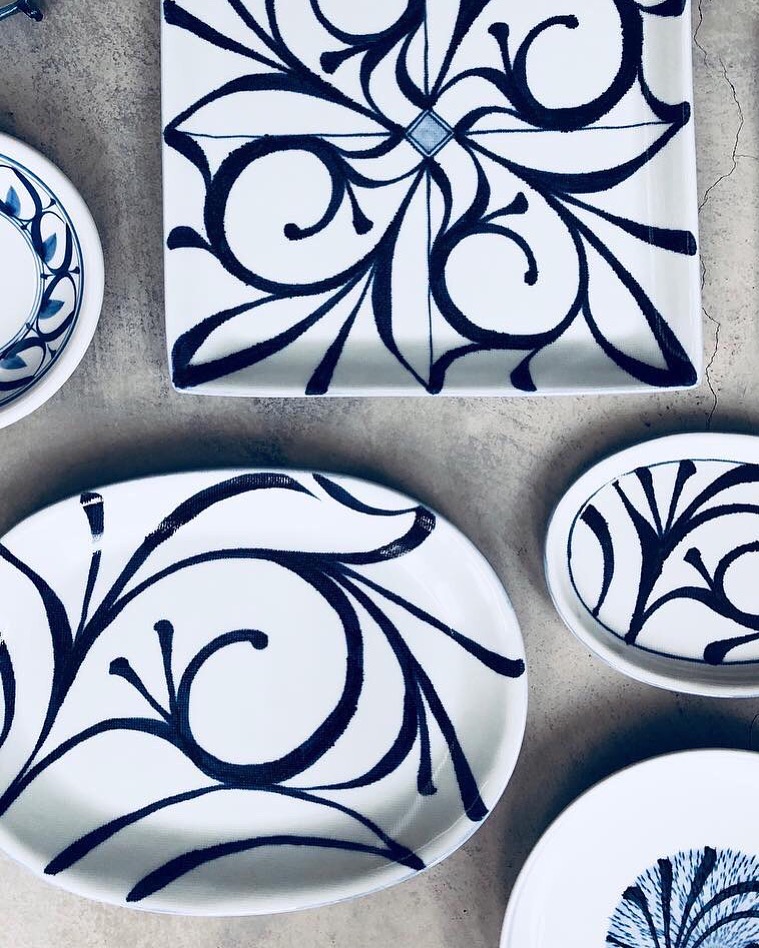 Karakusa plates by Baizan Studio; the oldest studio in Tobe
Karakusa plates by Baizan Studio; the oldest studio in Tobe
Featured potter No.1: Masami Kato – Studio Mi
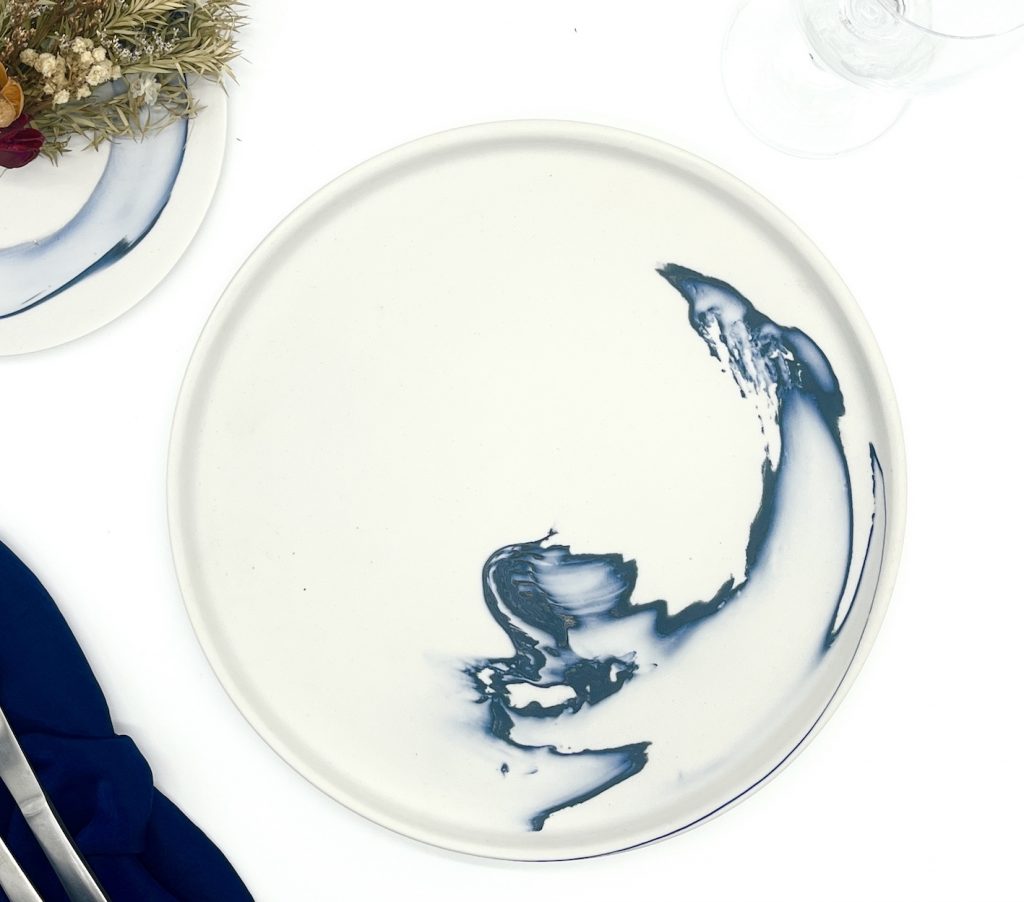
“waves”
Born in Matsuyama, Japan in 1982, Masami studied Fine Art at the St. Cloud State University in the US. After he came back to Japan in 2007, he took a diploma course at the Tobe pottery school. Upon his graduation he started working as a potter in one of the main studios in Tobe. Since 2016 he has been active as an independent ceramic artist.
Masami was one of the participants of the Tobe project (currently called TICEP; Tobe International Ceramic Exchange Programme) when Tom Kemp came to stay in Tobe as a resident artist in 2020. “Our exchange with Tom made me realise my potential of creating works as art as well as being practical table ware. This idea has been lying on the base of works I present”, Masami said.
“I first have a final image of works I’m building, then as I process everything starts coming together. This final image in my mind is so important that I always search for the right materials and the technique. The whole production process moves according to the final image I have in my mind. And often the image I have goes beyond the piece I’m working on to another – and it means that another piece can be a completely different form.”
Featured potter No.2: Chie Okada – Atelier Chie

Born in Tobe, before she took her apprenticeship under Endo Studio she’d worked for a kimono store in Kyoto where she learnt a numerous traditional patterns. Her use of colour is something completely unique among other potters in Tobe.
“I don’t have a cut pattern, I usually go with a flow so there are not two of the same in any of my works.”
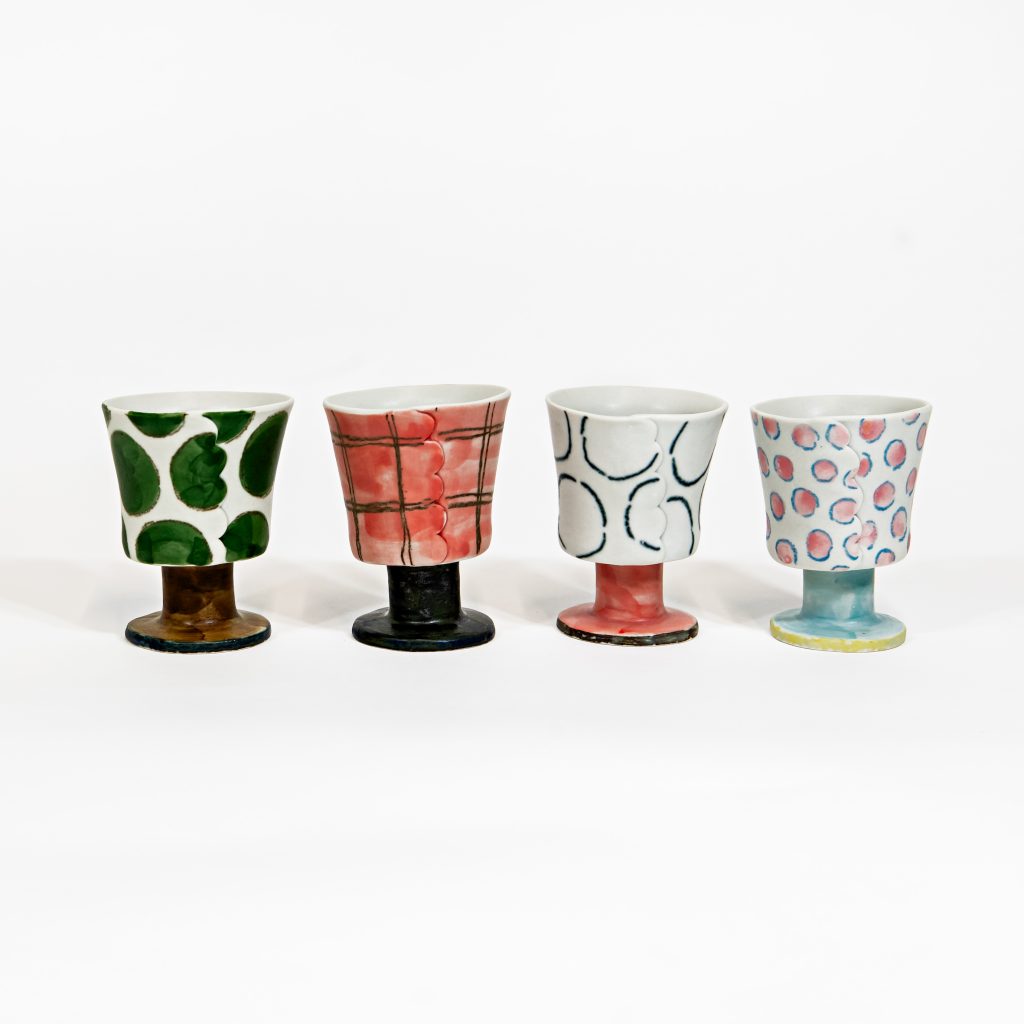
“goblets”
Featured potter No.3: Futoshi Miyauchi
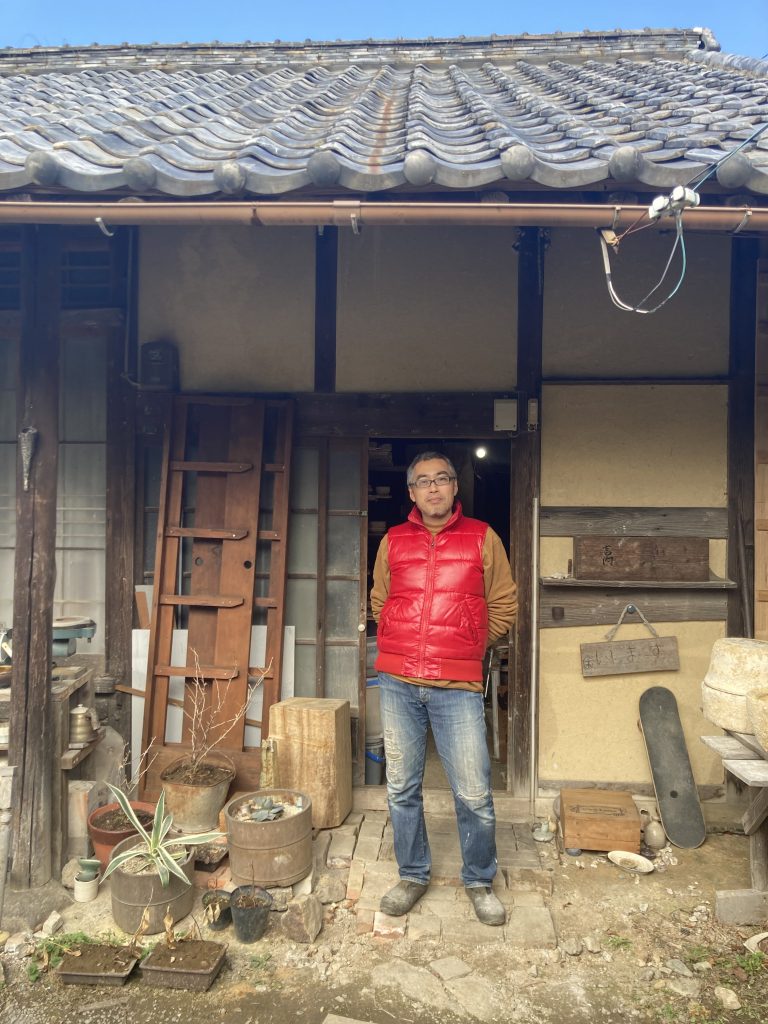
Fascinated by non perfection, assymetry, everyday objects/subjects his works are somewhat reminiscent of us; human characters.
“My principal is to keep the right balance of ‘YOHAKU’ – mental space to appreciate my clients’ feelings and at the same time be focused on my preference for simple colours and shapes.”
“Vases”
Featured potter No.4; Eisuke Kajiwara – Toubou Kibi
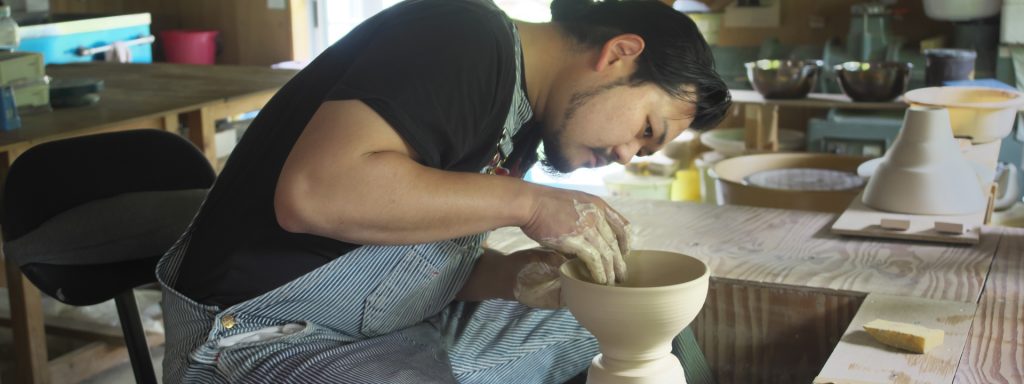
Born in 1985, Eisuke is the youngest Tobe Collective members. He is one of a few potters who explores with materials as well as the tools the uses – and one of a few who makes lampshades and plant pots in Tobe.
“It is my belief in “On Ko Chi Shin” (study the old to know the new) that keeps me make new works. I cannot ignore what has been laid out for us. They can be something I saw, heard, I experienced…which I utilise all those elements to make it mine.“
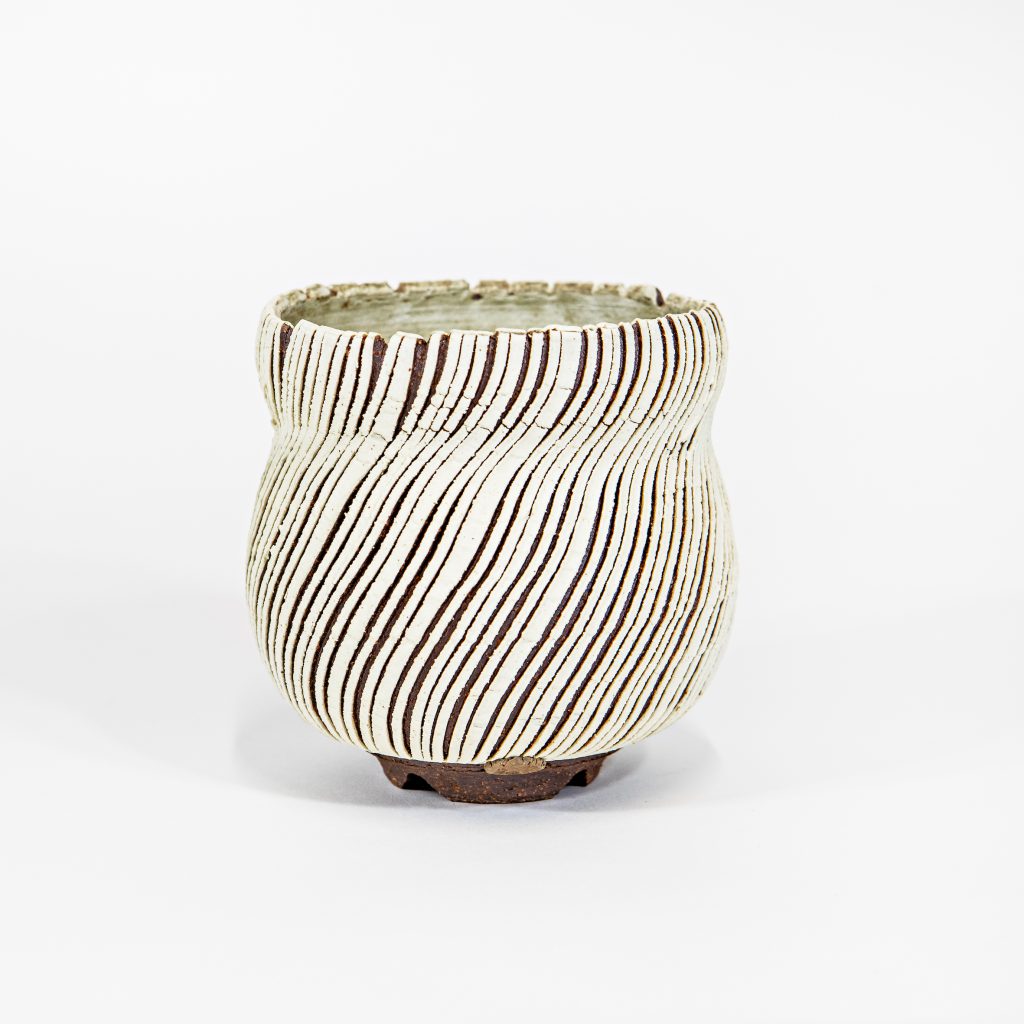 “Plant pot”
“Plant pot”
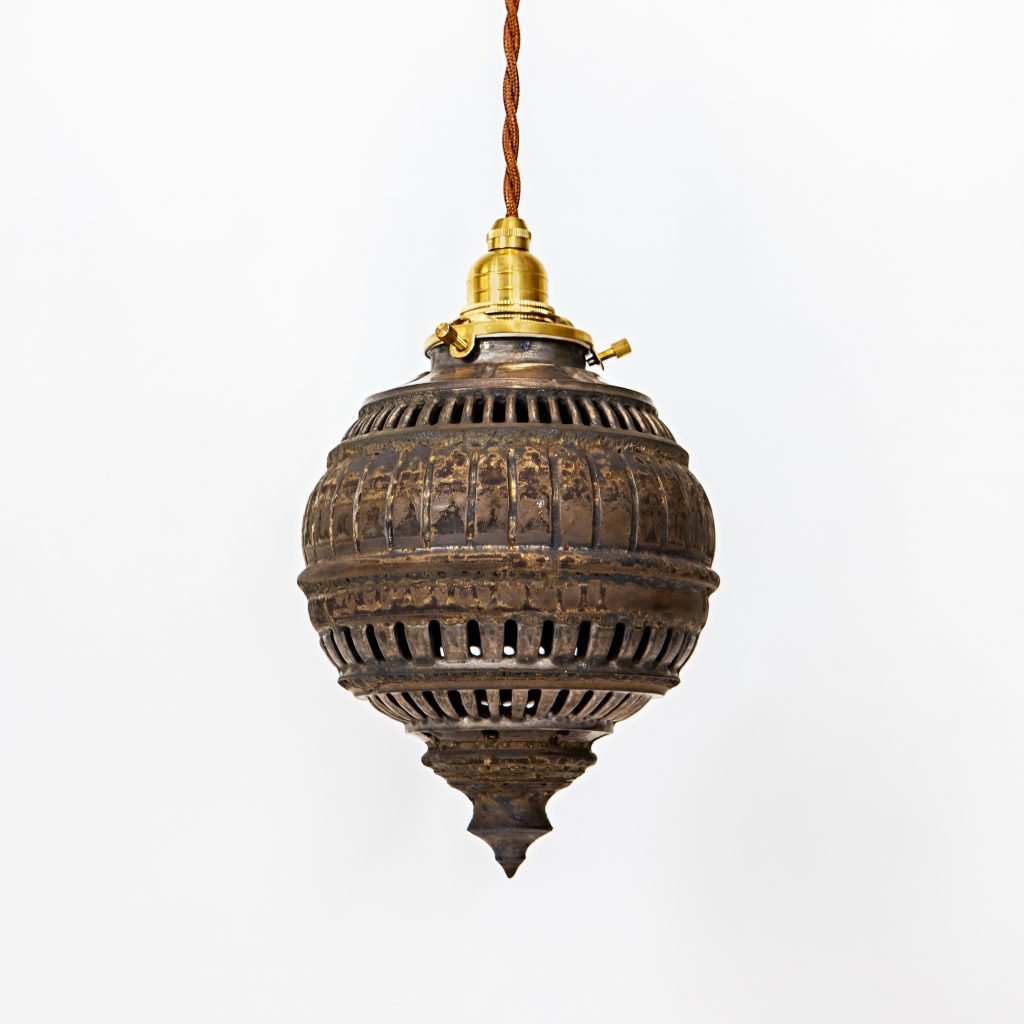
“Rinka lantern”
Featured potter No. 5 – Takayasu Nishioka; Eiryuji studio
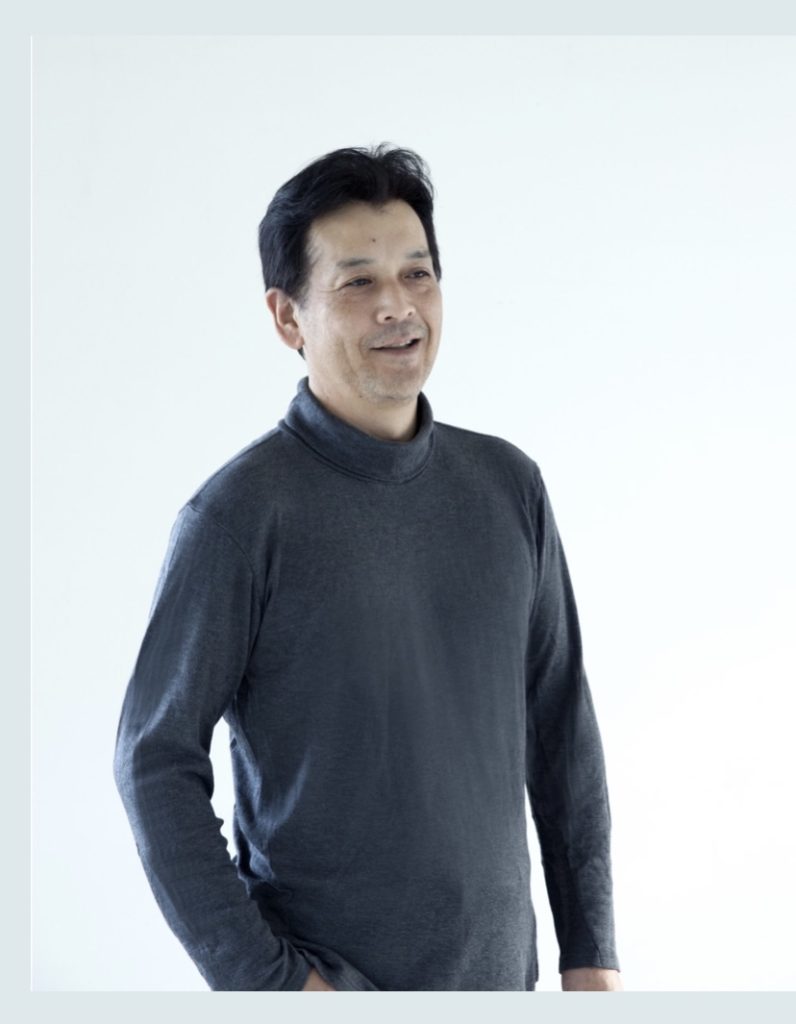
Although his father is one of the Dentou Kougei Shi (the highest honour for Japanese craft people) among the Tobe potters, Takayasu had decided to take his apprenticeship in north Japan, Kutani. There potters learn to paint a several layers on a vessel, with each layer finishes off with a new firing.
He is a founder member of Tobe Collective.
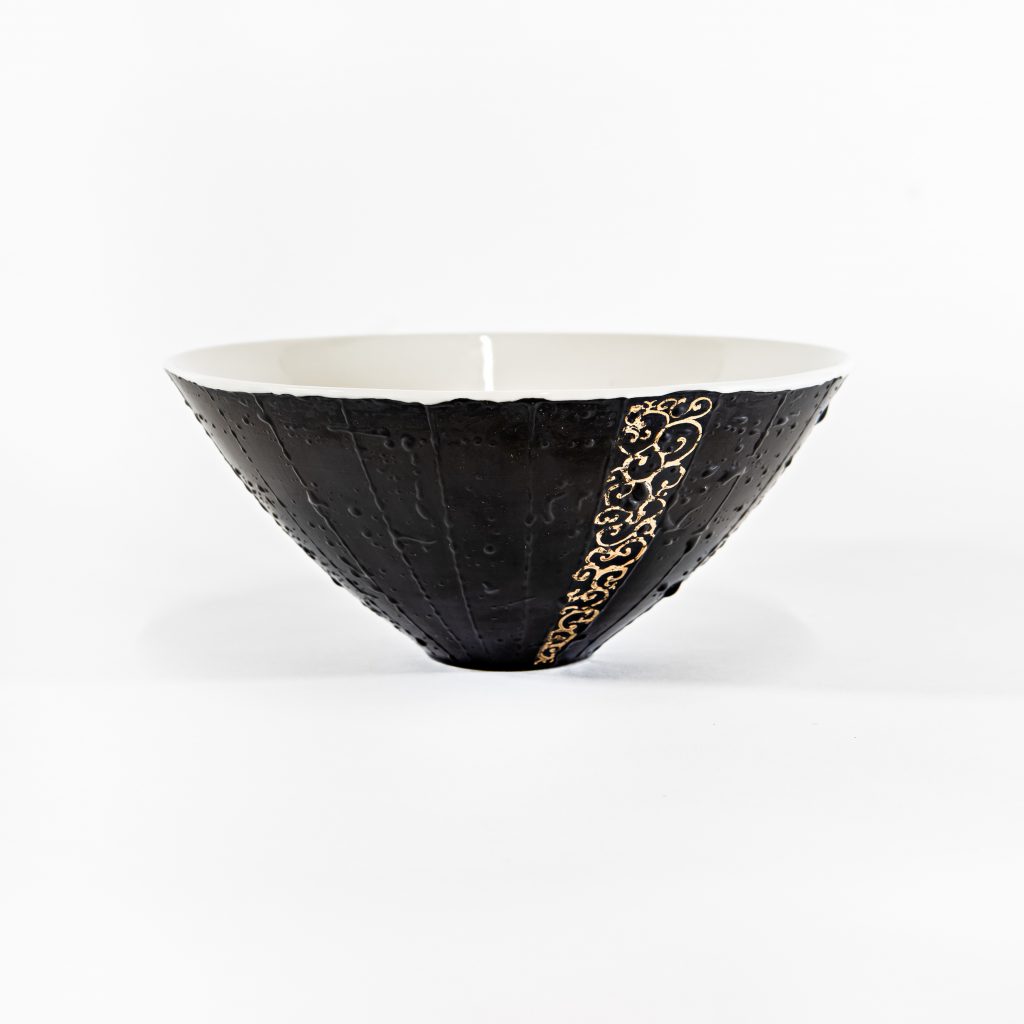 “Black ‘shizuku’ droplets bowl” (25cm x 18cm)
“Black ‘shizuku’ droplets bowl” (25cm x 18cm)
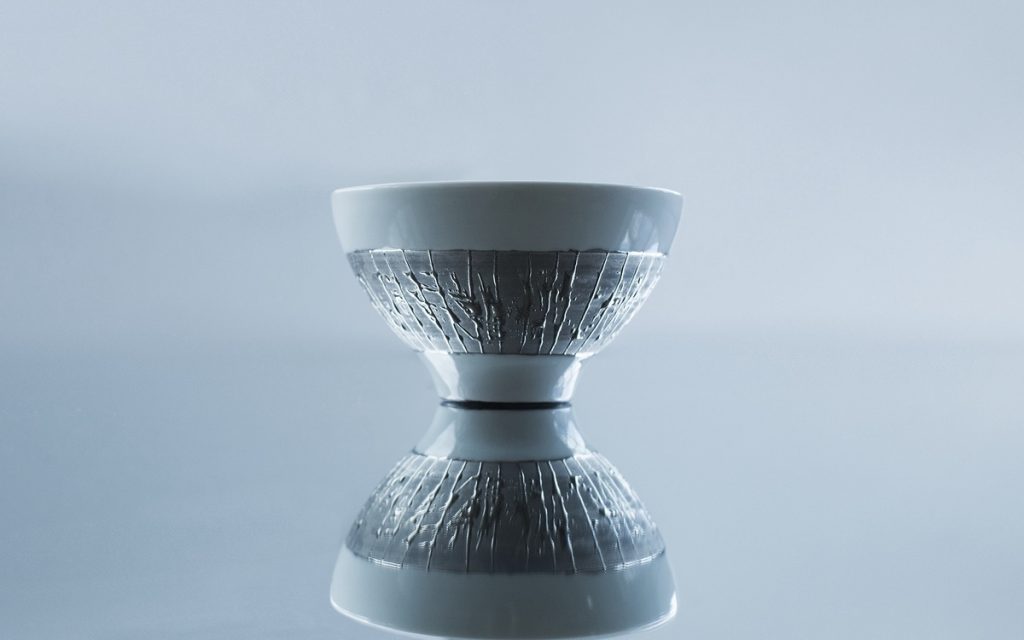
“Silver plated shizuku bowl”
Featured potter No. 6; Akihiro Masuda – Seika Yo
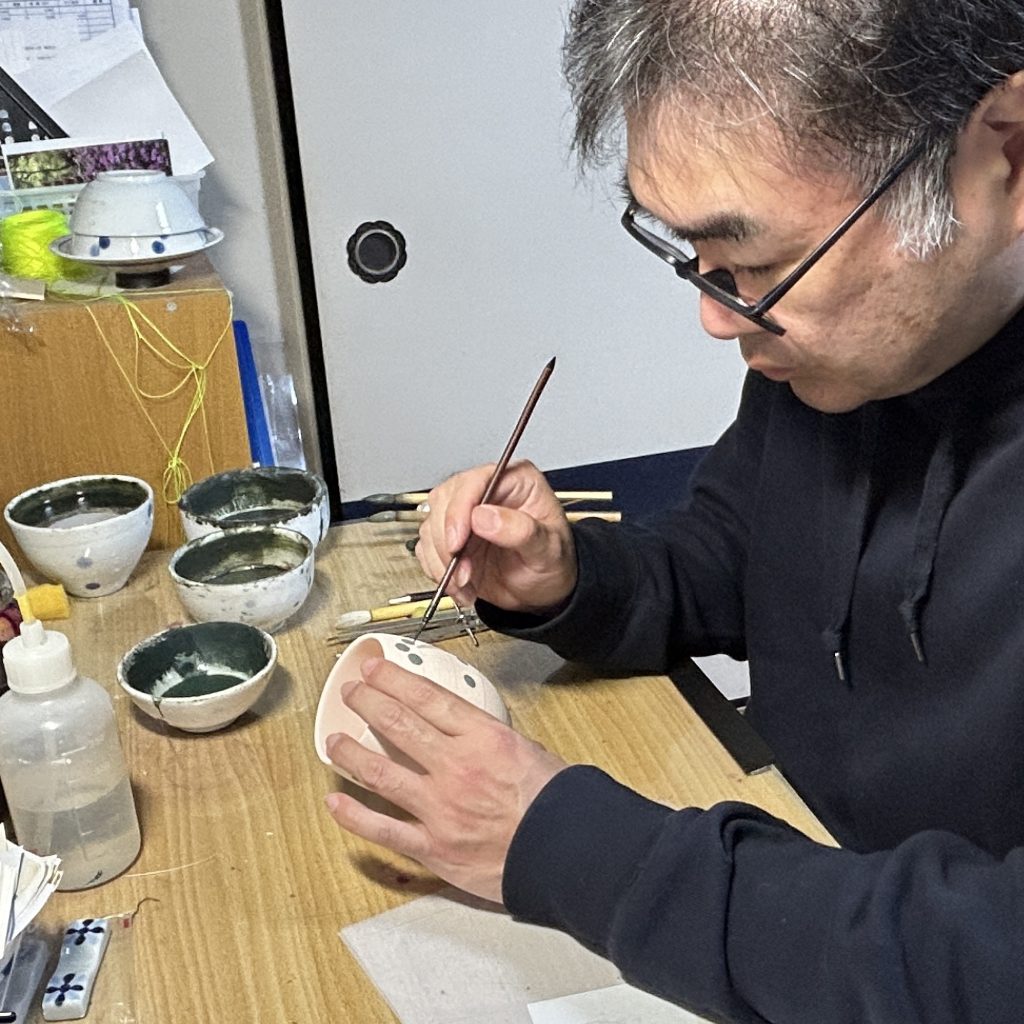
It takes one’s courage to talk about “love of making “ordinary” tableware especially being among other potters who are trying to produce “unique” pieces. Akihiro’s use of Gosu (traditional blue paint) on white porcelain surface gives us a sense of familiarity, warmth and comfort. Here we see him expanding his horizon by focusing on the idea of uniqueness of “ordinaries”.
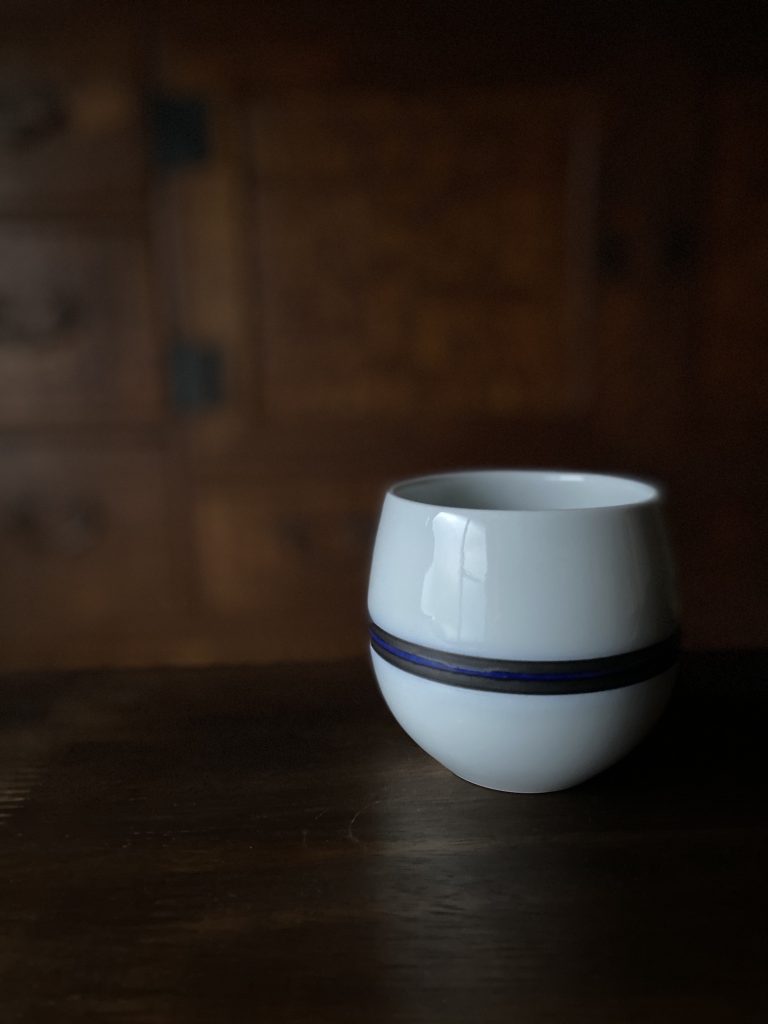
“Gosu maki cup”
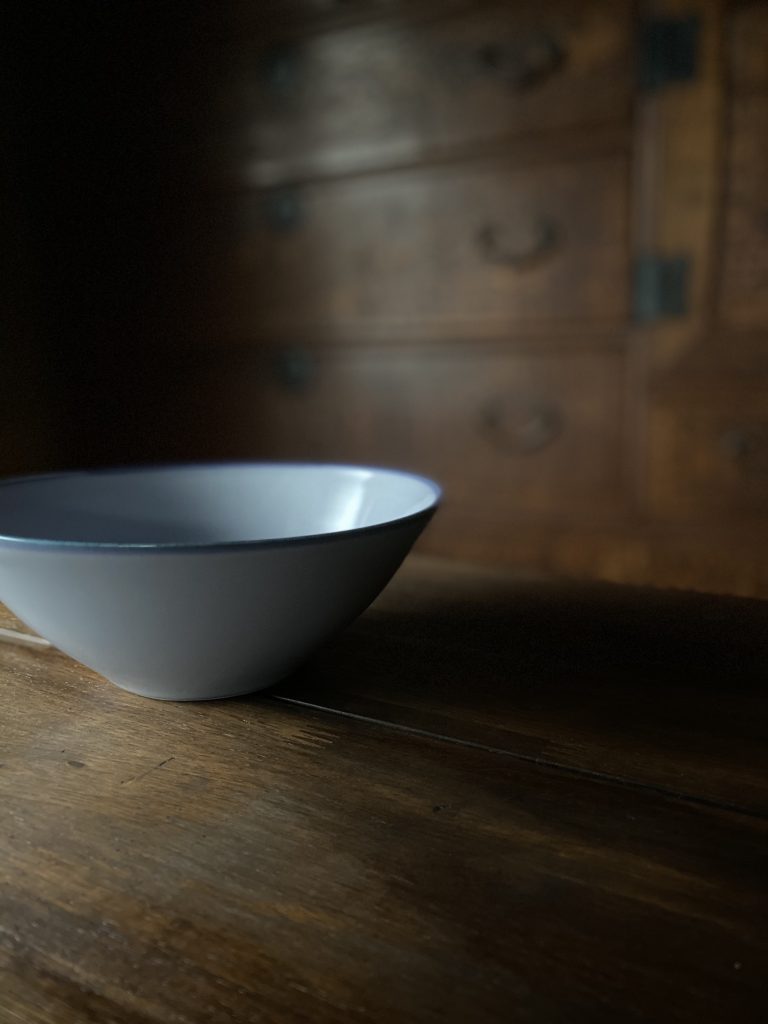
“lavender glaze bowl”

